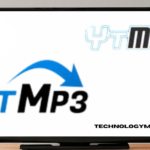In the United States, the Family Educational Rights and Privacy Act (FERPA) is a federal law that protects the privacy of student education records. The law applies to all schools that receive funds from the U.S. Department of Education. Under FERPA, schools must give students the right to inspect and review their education records, the right to request changes to inaccurate or misleading information in their records, and the right to control the disclosure of their personally identifiable information. So, how is data protected in the education sector? Keep reading to find out.
How is data protected in the education sector?
Data protection in the education sector is crucial because of the sensitive nature of student data. Student data includes name, address, social security number, academic records, and more. This data must be protected from unauthorized access, use, or disclosure. There are several ways that data is protected in the education sector. First, access to student data is restricted to authorized personnel only. Firewalls and other security measures are in place to protect against cyber attacks. Staff are also trained on how to properly handle student data. Student data is encrypted and masked when it is stored or transmitted. If you’re unfamiliar with the definition of data masking, it is the technique of obscuring sensitive data so that it can’t be easily accessed and/or used by unauthorized individuals. In the education sector, data masking is commonly used to protect student information from being accessed by third parties. By obscuring sensitive data, such as social security numbers and addresses, educators can help ensure that this information is not compromised or stolen. Additionally, data masking can also be used to protect against identity theft.
What are some of the challenges associated with protecting data in the education sector?
There are many challenges associated with protecting data in the education sector. One of the biggest challenges is that there are so many different types of data that need to be protected, from student records and transcripts to health information and financial aid data. Another challenge is that the education sector is a target for hackers, as they can gain access to valuable personal information of students and staff. Protecting data also requires constant vigilance against potential breaches, which can be costly and time-consuming. Additionally, different schools and districts have their own unique security needs, making it difficult to create a single standard for data protection across the entire education sector.
What are some tips for securing your personal information online?
There are many ways to protect data, but some methods are more effective than others. Some tips for securing personal information online include using strong passwords, changing passwords often, using different passwords for different websites, and using a password manager. Another tip is to be aware of what you are clicking on and downloading. Be careful when opening email attachments and clicking on links, as these can often contain malware or viruses. You should also make sure your anti-virus software is up-to-date and enabled. Additionally, it is important to be aware of who you are sharing your information with. Only share information with people you trust, and be careful about what information you post online.
If you’re wondering if colleges run background checks on students, some colleges are starting to run background checks on their students. This is done to protect the safety of both the students and the staff. Thankfully, data is protected in the education sector by using various methods such as encryption and tokenization. One reason why colleges may be running background checks on their students is to protect the safety of both the students and the staff. By running background checks, colleges can ensure that they are not admitting any students who may pose a threat to either themselves or others.
Education sector data is protected through a variety of means, including physical security, access controls, and data encryption. These measures help to ensure that data is not accessed or compromised by unauthorized individuals. Overall, the protection of education sector data is critical to the safety and security of students, staff, and other individuals associated with the sector.









